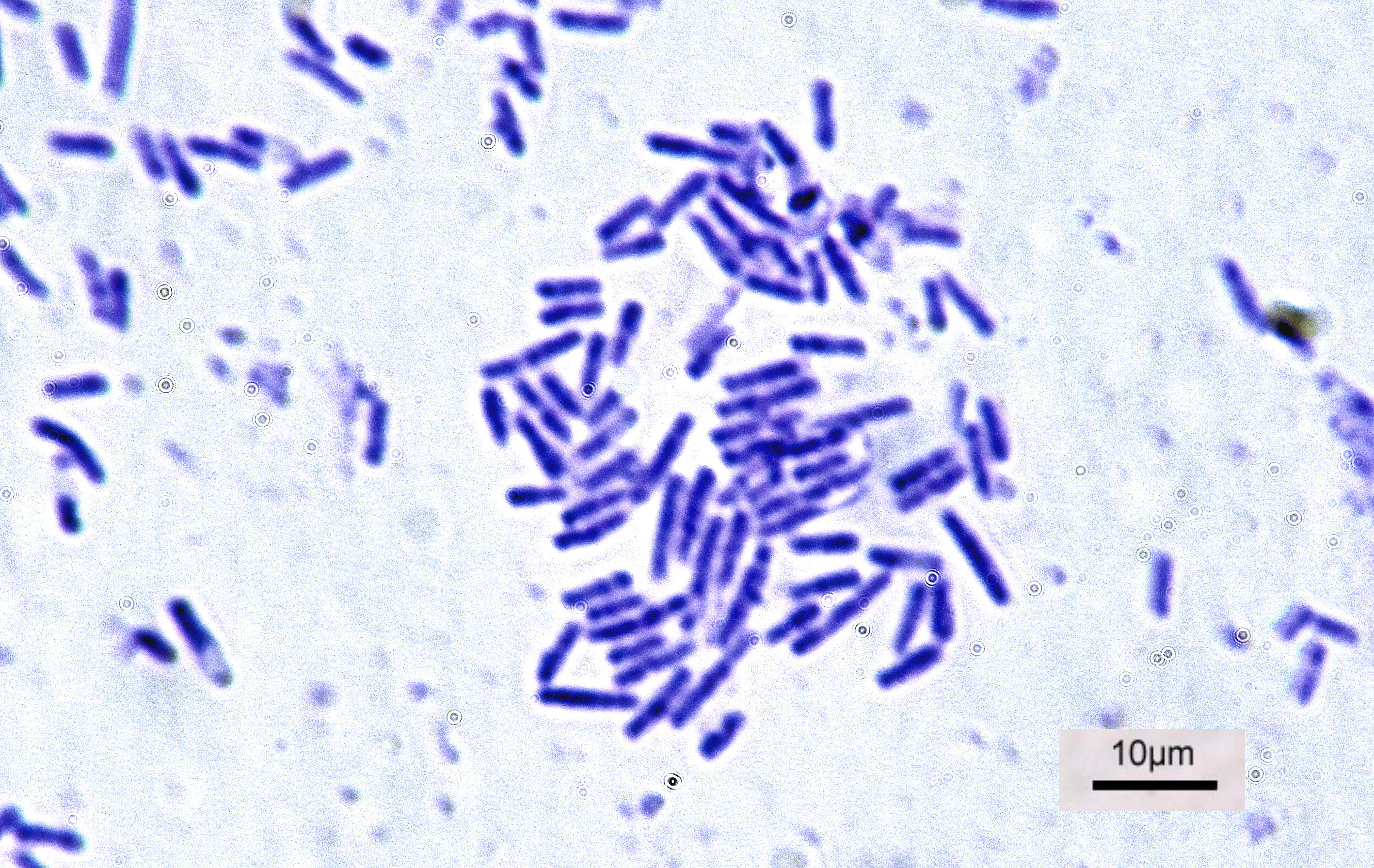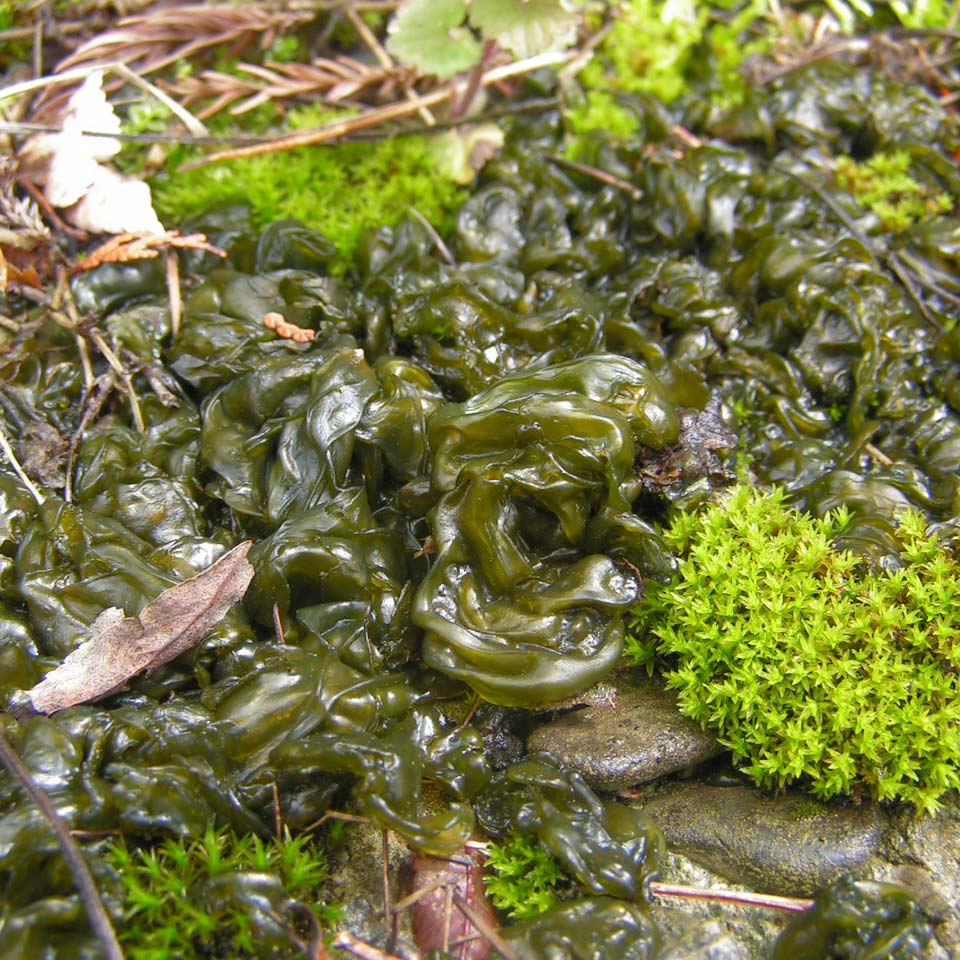|
Diazotrophic
Diazotrophs are bacteria and archaea that fix gaseous nitrogen in the atmosphere into a more usable form such as ammonia. A diazotroph is a microorganism that is able to grow without external sources of fixed nitrogen. Examples of organisms that do this are rhizobia and ''Frankia'' (in symbiosis) and '' Azospirillum''. All diazotrophs contain iron-molybdenum or iron-vanadium nitrogenase systems. Two of the most studied systems are those of ''Klebsiella pneumoniae'' and ''Azotobacter vinelandii''. These systems are studied because of their genetic tractability and their fast growth. Etymology The word diazotroph is derived from the words ''diazo'' ("di" = two + "azo" = nitrogen) meaning "dinitrogen (N2)" and ''troph'' meaning "pertaining to food or nourishment", in summary dinitrogen utilizing. The word ''azote'' means nitrogen in French and was named by French chemist and biologist Antoine Lavoisier, who saw it as the part of air which cannot sustain life. Types of diazotrophs D ... [...More Info...] [...Related Items...] OR: [Wikipedia] [Google] [Baidu] |
Cyanothece
''Cyanothece'' is a genus of unicellular, diazotrophic, oxygenic photosynthesizing cyanobacteria. Modern organisms and cellular organization In 1976, Jiří Komárek defined the prokaryotic cyanobacteria genus ''Cyanothece'' as distinct from ''Synechococcus'' NAG 1949. Organisms in both genera share characteristics in addition to being oxygenic phototrophs. They are both unicellular, forming aggregates, but not found in mucilaginous colonies. They may have a thin mucilage layer around each cell. Both genera also divide by binary fission along an axis perpendicular to the cell's longitudinal axis. A handful of characteristics distinguish the two genera. While ''Synechococcus'' species are usually cylindrical, ''Cyanothece'' species are normally oval and longer than 3 μm., ''Cyanothece’s'' outer cell wall layer is relatively thick and contains spherical, glassy vesicles whose function has yet to be defined. ''Cyanothece’s'' nucleoids are spread loosely throughout the ... [...More Info...] [...Related Items...] OR: [Wikipedia] [Google] [Baidu] |
Rhizobia
Rhizobia are diazotrophic bacteria that fix nitrogen after becoming established inside the root nodules of legumes (Fabaceae). To express genes for nitrogen fixation, rhizobia require a plant host; they cannot independently fix nitrogen. In general, they are gram negative, motile, non- sporulating rods. Rhizobia are a "group of soil bacteria that infect the roots of legumes to form root nodules". Rhizobia are found in the soil and after infection, produce nodules in the legume where they fix nitrogen gas (N2) from the atmosphere turning it into a more readily useful form of nitrogen. From here, the nitrogen is exported from the nodules and used for growth in the legume. Once the legume dies, the nodule breaks down and releases the rhizobia back into the soil where they can live individually or reinfect a new legume host. History The first known species of rhizobia, ''Rhizobium leguminosarum'', was identified in 1889, and all further species were initially placed in the ... [...More Info...] [...Related Items...] OR: [Wikipedia] [Google] [Baidu] |
Bacillus Macerans
''Bacillus'' (Latin "stick") is a genus of Gram-positive, rod-shaped bacteria, a member of the phylum ''Bacillota'', with 266 named species. The term is also used to describe the shape (rod) of other so-shaped bacteria; and the plural ''Bacilli'' is the name of the class of bacteria to which this genus belongs. ''Bacillus'' species can be either obligate aerobes which are dependent on oxygen, or facultative anaerobes which can survive in the absence of oxygen. Cultured ''Bacillus'' species test positive for the enzyme catalase if oxygen has been used or is present. ''Bacillus'' can reduce themselves to oval endospores and can remain in this dormant state for years. The endospore of one species from Morocco is reported to have survived being heated to 420 °C. Endospore formation is usually triggered by a lack of nutrients: the bacterium divides within its cell wall, and one side then engulfs the other. They are not true spores (i.e., not an offspring). Endospore formation ... [...More Info...] [...Related Items...] OR: [Wikipedia] [Google] [Baidu] |
Robert E
The name Robert is an ancient Germanic given name, from Proto-Germanic "fame" and "bright" (''Hrōþiberhtaz''). Compare Old Dutch ''Robrecht'' and Old High German ''Hrodebert'' (a compound of '' Hruod'' ( non, Hróðr) "fame, glory, honour, praise, renown" and '' berht'' "bright, light, shining"). It is the second most frequently used given name of ancient Germanic origin. It is also in use as a surname. Another commonly used form of the name is Rupert. After becoming widely used in Continental Europe it entered England in its Old French form ''Robert'', where an Old English cognate form (''Hrēodbēorht'', ''Hrodberht'', ''Hrēodbēorð'', ''Hrœdbœrð'', ''Hrœdberð'', ''Hrōðberχtŕ'') had existed before the Norman Conquest. The feminine version is Roberta. The Italian, Portuguese, and Spanish form is Roberto. Robert is also a common name in many Germanic languages, including English, German, Dutch, Norwegian, Swedish, Scots, Danish, and Icelandic. It c ... [...More Info...] [...Related Items...] OR: [Wikipedia] [Google] [Baidu] |
Anoxygenic Photosynthesis
Bacterial anoxygenic photosynthesis differs from the better known oxygenic photosynthesis in plants by the reductant used (e.g. hydrogen sulfide instead of water) and the byproduct generated (e.g. elemental sulfur instead of molecular oxygen). Bacteria and archaea Several groups of bacteria can conduct anoxygenic photosynthesis: green sulfur bacteria (GSB), red and green filamentous phototrophs (FAPs e.g. Chloroflexia), purple bacteria, acidobacteriota, and heliobacteria. Some archaea (e.g. ''Halobacterium'') capture light energy for metabolic function and are thus phototrophic but none are known to "fix" carbon (i.e. be photosynthetic). Instead of a chlorophyll-type receptor and electron transport chain, proteins such as halorhodopsin capture light energy with the aid of diterpenes to move ions against a gradient and produce ATP via chemiosmosis in the manner of mitochondria. Pigments The pigments used to carry out anaerobic photosynthesis are similar to chlorophyll but di ... [...More Info...] [...Related Items...] OR: [Wikipedia] [Google] [Baidu] |
Trichodesmium
''Trichodesmium'', also called sea sawdust, is a genus of filamentous cyanobacteria. They are found in nutrient poor tropical and subtropical ocean waters (particularly around Australia and in the Red Sea, where they were first described by Captain Cook). ''Trichodesmium'' is a diazotroph; that is, it fixes atmospheric nitrogen into ammonium, a nutrient used by other organisms. ''Trichodesmium'' is thought to fix nitrogen on such a scale that it accounts for almost half of the nitrogen fixation in marine systems globally. ''Trichodesmium'' is the only known diazotroph able to fix nitrogen in daylight under aerobic conditions without the use of heterocysts. ''Trichodesmium'' can live as individual filaments, with tens to hundreds of cells strung together, or in colonies consisting of tens to hundreds of filaments clustered together. These colonies are visible to the naked eye and sometimes form blooms, which can be extensive on surface waters. These large blooms led to wide ... [...More Info...] [...Related Items...] OR: [Wikipedia] [Google] [Baidu] |
Synechococcus
''Synechococcus'' (from the Greek ''synechos'', in succession, and the Greek ''kokkos'', granule) is a unicellular cyanobacterium that is very widespread in the marine environment. Its size varies from 0.8 to 1.5 µm. The photosynthetic coccoid cells are preferentially found in well–lit surface waters where it can be very abundant (generally 1,000 to 200,000 cells per ml). Many freshwater species of ''Synechococcus'' have also been described. The genome of ''S. elongatus'' strain PCC7002 has a size of 3,008,047 bp, whereas the oceanic strain WH8102 has a genome of size 2.4 Mbp. Introduction ''Synechococcus'' is one of the most important components of the prokaryotic autotrophic picoplankton in the temperate to tropical oceans. The genus was first described in 1979, and was originally defined to include "small unicellular cyanobacteria with ovoid to cylindrical cells that reproduce by binary traverse fission in a single plane and lack sheaths". This definition o ... [...More Info...] [...Related Items...] OR: [Wikipedia] [Google] [Baidu] |
Prochlorococcus
''Prochlorococcus'' is a genus of very small (0.6 μm) marine cyanobacteria with an unusual pigmentation ( chlorophyll ''a2'' and ''b2''). These bacteria belong to the photosynthetic picoplankton and are probably the most abundant photosynthetic organism on Earth. ''Prochlorococcus'' microbes are among the major primary producers in the ocean, responsible for a large percentage of the photosynthetic production of oxygen.Munn, C. ''Marine Microbiology: ecology and applications Second Ed.'' Garland Science, 2011. Prochlorococcus strains, called ecotypes, have physiological differences enabling them to exploit different ecological niches. Analysis of the genome sequences of ''Prochlorococcus'' strains show that 1,273 genes are common to all strains, and the average genome size is about 2,000 genes. In contrast, eukaryotic algae have over 10,000 genes. Discovery Although there had been several earlier records of very small chlorophyll-''b''-containing cyanobacteria in the oc ... [...More Info...] [...Related Items...] OR: [Wikipedia] [Google] [Baidu] |
Nostoc Commune
''Nostoc commune'' is a species of cyanobacterium in the family Nostocaceae. Common names include star jelly, witch's butter, mare's eggs, fah-tsai and facai. It is the type species of the genus ''Nostoc'' and is cosmopolitan in distribution. Description ''Nostoc commune'' is a colonial species of cyanobacterium. It initially forms a small, hollow gelatinous globule which grows and becomes leathery, flattened and convoluted, forming a gelatinous mass with other colonies growing nearby. Inside the thin sheath are numerous unbranched hair-like structures called trichomes formed of short cells in a string. The cells are bacteria and thus have no nucleus nor internal membrane system. To multiply, they form two new cells when they divide by binary fission. Along the trichomes, larger specialist nitrogen-fixing cells called heterocysts occur between the ordinary cells. When wet, ''Nostoc commune'' is bluish-green, olive green or brown but in dry conditions it becomes an inconspicuous ... [...More Info...] [...Related Items...] OR: [Wikipedia] [Google] [Baidu] |
Anabaena Cylindrica
''Anabaena'' is a genus of filamentous cyanobacteria that exist as plankton. They are known for nitrogen-fixing abilities, and they form symbiotic relationships with certain plants, such as the mosquito fern. They are one of four genera of cyanobacteria that produce neurotoxins, which are harmful to local wildlife, as well as farm animals and pets. Production of these neurotoxins is assumed to be an input into its symbiotic relationships, protecting the plant from grazing pressure. A DNA sequencing project was undertaken in 1999, which mapped the complete genome of ''Anabaena'', which is 7.2 million base pairs long. The study focused on heterocysts, which convert nitrogen into ammonia. Certain species of ''Anabaena'' have been used on rice paddy fields, proving to be an effective natural fertilizer. Nitrogen fixation by ''Anabaena'' Under nitrogen-limiting conditions, vegetative cells differentiate into heterocysts at semiregular intervals along the filaments. Heterocyst cel ... [...More Info...] [...Related Items...] OR: [Wikipedia] [Google] [Baidu] |




